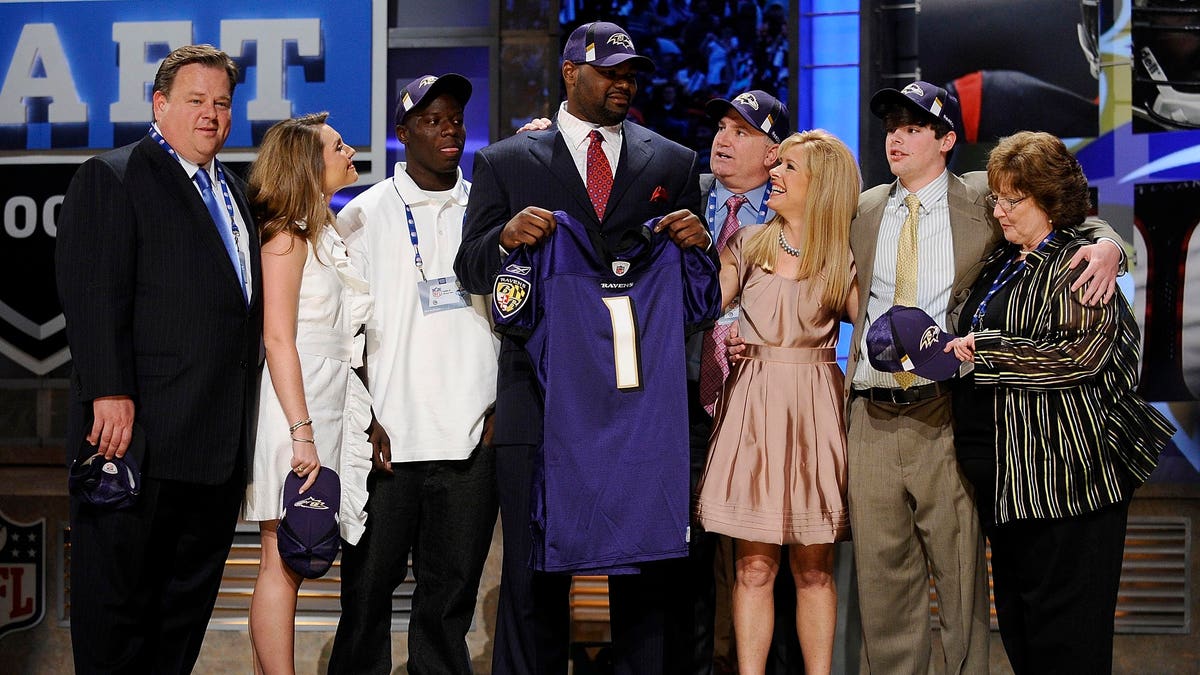Michael Oher, who is the subject of the 2009 award-winning movie The Blind Side, has alleged that much of the critically-acclaimed movie was fabricated. The film has long been criticized for its white savior narrative. White saviorism can be thought of as the belief that white people must save, help, teach, and protect their non-white counterparts.
The film depicts Oher’s journey as a Black child who went from being unhoused and in the foster care system, to a first-round NFL draft pick because of the “help” of a white family, the Tuohys. In an NPR interview about Oher’s 2011 book, I Beat the Odds, Oher lamented the fact that the film distorted certain aspects of his story. “I felt like it portrayed me as dumb instead of as a kid who never had consistent academic instruction and ended up thriving once he got it.”
Oher has recently been in the headlines because of petition he filed in a Tennessee court where he claimed that the Tuohy family never actually adopted him but put him into a conservatorship, where they were able to make legal decisions on his behalf. Oher also alleges that although the film made over $300 million in revenue, he made no money from the film. The Tuohys have called these accusations “ridiculous” and have outright denied Oher’s claims, saying that it’s part of a “shakedown” attempt.
White saviorism, which can be seen in Academy Award-winning movies like The Help, Hidden Figures, and Avatar, can also manifest in real life. Non-white communities experience the burden of white saviorism in a number of ways and it can be hard to draw the line between effective advocacy and white saviorism that contributes to further harm. How do you ensure you are not engaging in white saviorism and that your actions are positively impacting the most harmed communities? Here are four questions to consider to prevent white saviorism.
1. Who is experiencing harm right now? White saviorism centers the white savior and not the person or people in need of “saving.” Ask yourself: Who is most impacted by the current conditions? Identify the individuals that are directly experiencing harm and prioritize them and their experiences. It could be harm caused by a natural disaster or environmental catastrophe, war and conflict, or societal inequities. It’s important to understand who are the most affected and impacted and focus harm-reduction efforts there. Although not mandatory, it’s also extremely helpful to understand the origin of harm because you could play a pivotal role in addressing harm at the root.
2. How do those impacted want the harm to be addressed? White saviorism ignores the question of how those directly impacted want harm to be repaired. The needs and desires of those most impacted often go overlooked and assumptions are made about what is in their best interest. Often times, programs and policies are created to repair harm, but no one directly impacted is part of their creation. Have you actually asked the people that have been victimized, marginalized and oppressed what they want and need to repair the harm they’ve experienced? It is important to remember the popular slogan from the South African disability rights movement of the 1990s: “nothing about us without us.” The needs of the most impacted must always be centered in harm-reduction efforts.
3. How can harm be directly addressed? Many people have supported charities to address societal issues that plague different marginalized communities. In an attempt to help harmed populations, many turn to charitable organizations and non-profits. Non-profit organizations like Susan G. Komen (formerly the Susan G. Komen Breast Cancer Foundation) and the Red Cross were originally created to help communities in need but have been under scrutiny for what some have called a lack of transparency and a misuse of funds. Rather than donating to outside organizations where it’s often unclear whether those directly harmed will receive contributions, mutual aid funds can be a more transparent and equitable alternative. It’s always a good idea, whenever possible, to give directly to those who have most impacted.
4. How can my power, privilege and access be used to reduce future harm? Are you consistently interrogating the myriad ways you hold power and privilege that grant you more access than others? All of us, including folks with marginalized identities, hold different privileges: it could be white privilege, educational privilege, wealth privilege, American privilege, age privilege, etc. What specific actions do the most marginalized want you to take to address and repair the harm they’ve experienced? Understanding the power and privilege you hold can better your understanding of how to help those most impacted. Directly assess what support looks like for the most harmed and remember to always center their needs in any “savior” efforts.
Read the full article here





